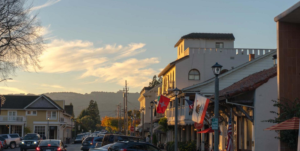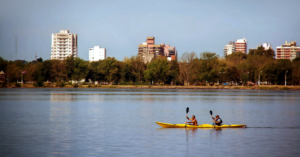These steps are being taken to lessen the amount of heat gain caused by sun exposure. A structure’s outside surfaces are exposed to more sunlight at specific periods of the year. By screening the windows from the outside, the reduction in heat gain via windows may be greatly decreased. Additionally, boosting the reflectivity of opaque walls is meant to lessen the area’s heat island impact.
CALGreen Code Section A5.106.7: Exterior wall shading.
Meet requirements in the current edition of the California Energy Code and comply with either Section A5.106.7.1 or A5.106.7.2 for wall surfaces. If using vegetative shade, plant species documented to reach desired coverage within 5 years of building occupancy.
CALGreen Code Section A5.106.7.1: Fenestration.
Provide vegetative or manmade shading devices for all fenestration on east-, south-, and west-facing walls.
CALGreen Code Section A5.106.7.1.1: East and west walls.
Shading devices shall have 30-percent coverage to a height of 20 feet or to the top of the exterior wall, whichever is less. Calculate shade coverage on the summer solstice at 10 AM for east-facing walls and at 3 PM for west-facing walls.
CALGreen Code Section A5.106.7.1.2: South walls.
Shading devices shall have 60-percent coverage to a height of 20 feet or to the top of the exterior wall, whichever is less.
CALGreen Code Section A5.106.7.2: Opaque wall areas.
Use wall surfacing with minimum SRI 25 (aged), for 75 percent of opaque wall areas.
Exception: Use of vegetated shade in Wildland-Urban Interface Areas as defined in Chapter 7A (Materials and Construction Methods for Exterior Wildfire Exposure) of the California Building Code shall meet the requirements of that chapter.
Note: If not available from the manufacturer, aged SRI value calculations may be found at the California Energy Commission’s website at www.energy.ca.gov.
Intent:
The intent of these measures is to reduce the amount of heat gain from solar exposure. During certain times of the year the exterior surfaces of a structure are subject to increased solar exposure. The reduction in heat gain through windows can be significantly reduced by exterior shading of the windows. Also, increasing the reflectance of opaque walls is intended to reduce the heat island effect for the area. California Energy Code, Part 6, Title 24, California Code of Regulations regulates the energy efficiency of the building envelope.
Compliance Method:
Include in the landscape design and plant specifications species of plants that meet the shading requirements for exterior wall surfaces. Additionally, man-made shading devices can be specified for exterior wall applications. Energy compliance forms and software programs may serve as documentation of the efficacy of exterior shading and/or solar reflectance.
Enforcement:
Plan intake: The plan reviewer should confirm that construction documents show shading measures have been incorporated into the building and site design.
On-site enforcement: The inspector should verify that man-made or vegetative shading devices are installed as designed and confirm that any exposed opaque walls are compliant with specified SRI values.
(Excerpted from ‘Guide to the 2022 California Green Building Standards Code Nonresidential’ – Appendix A5)




